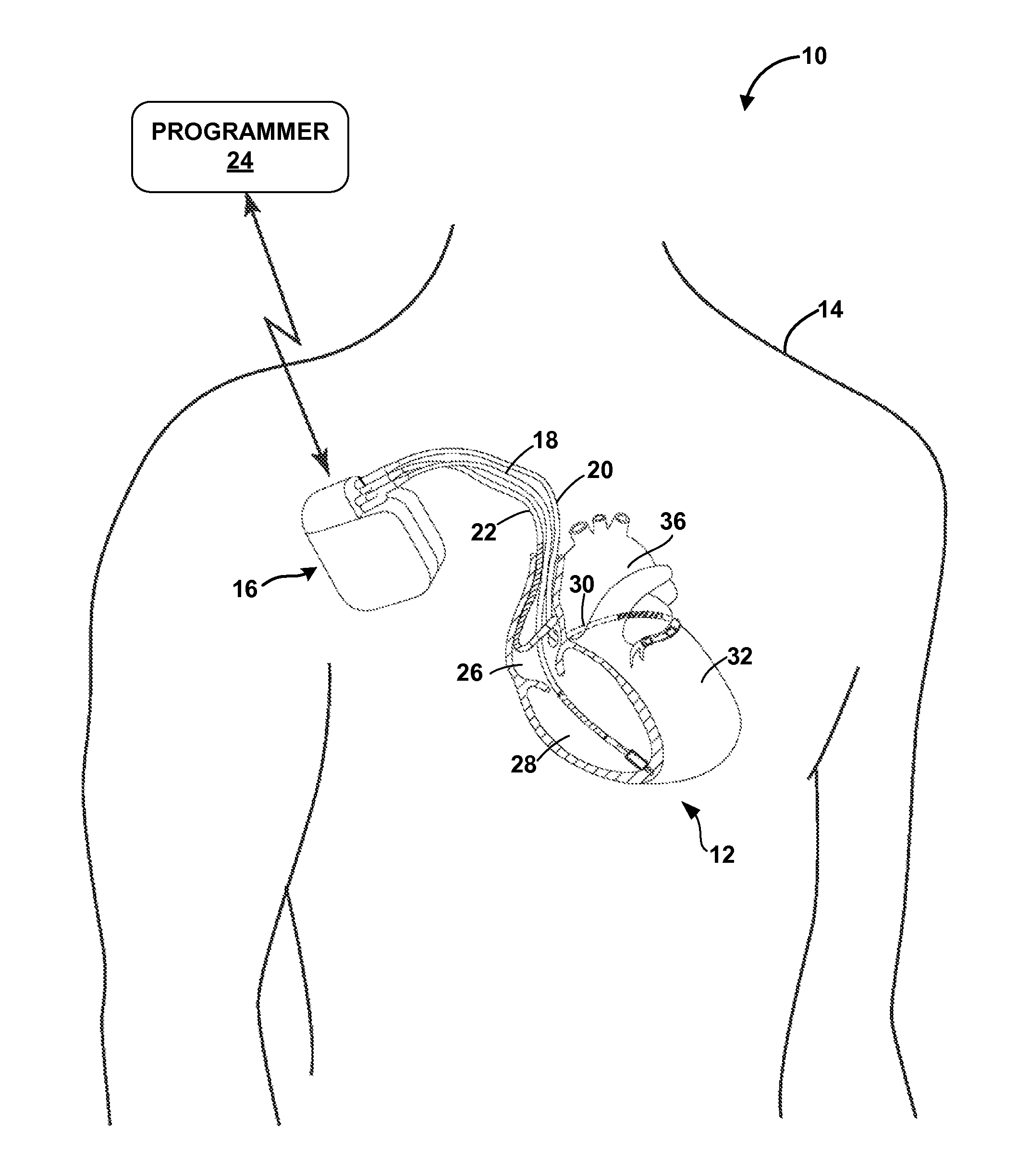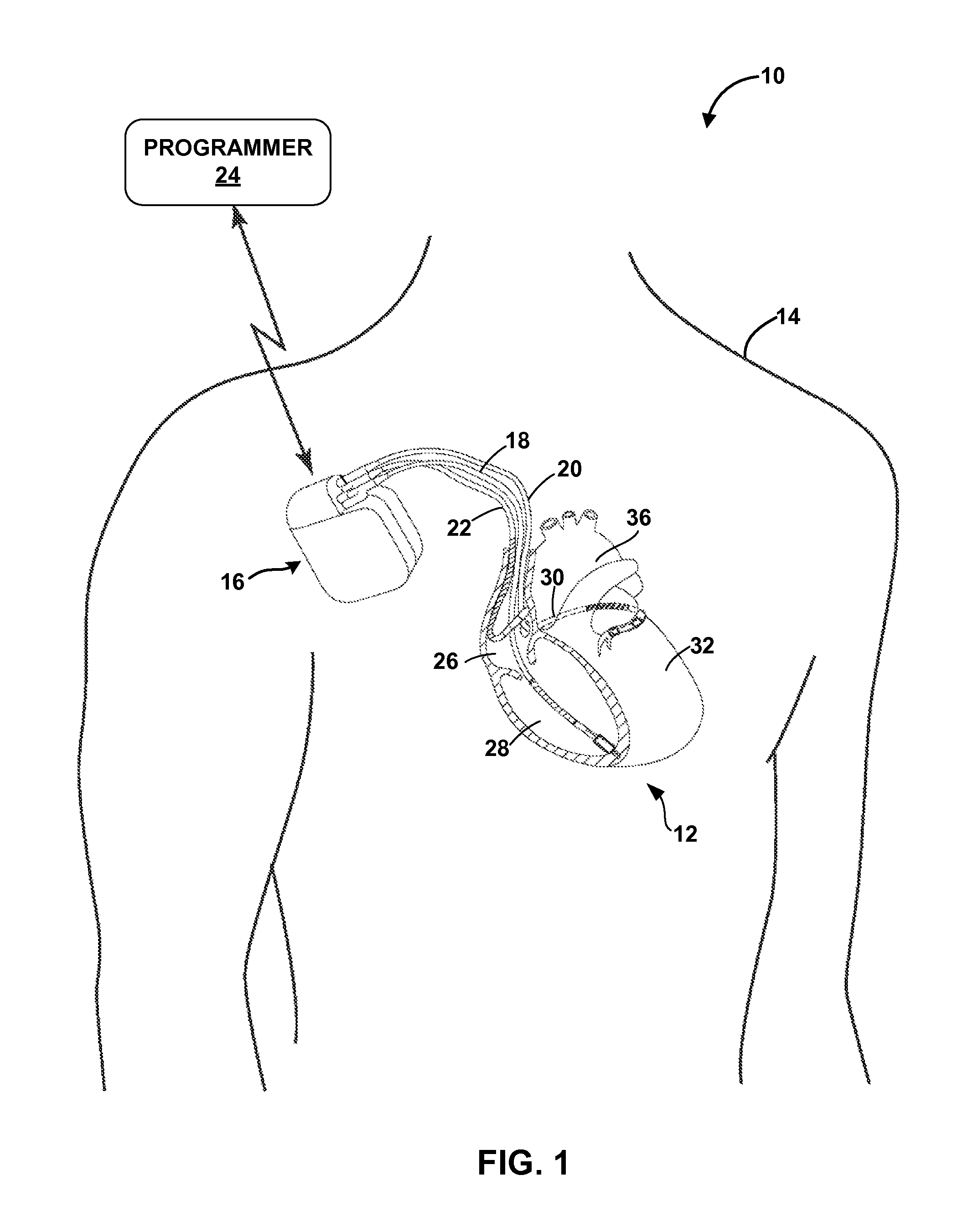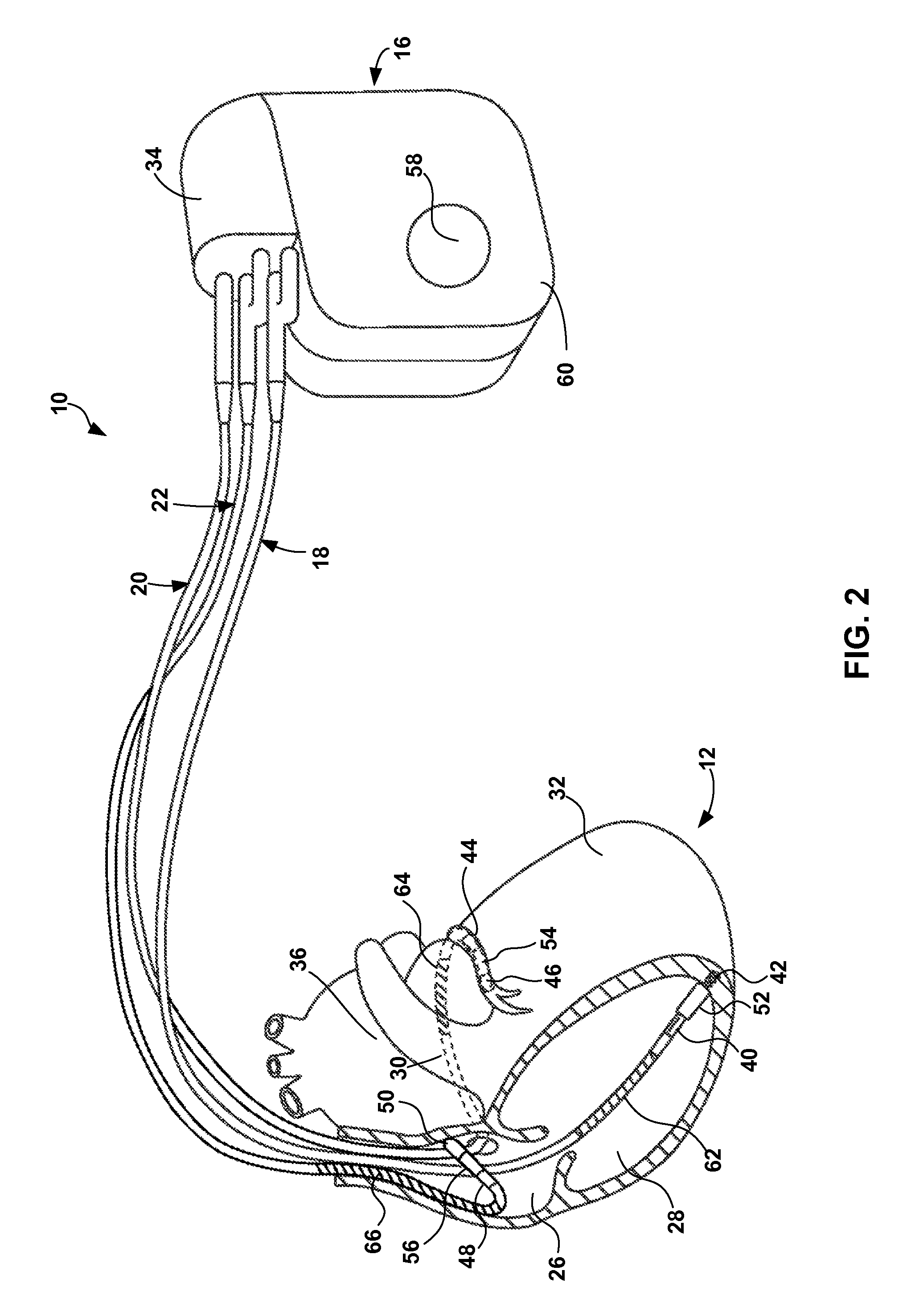Vagal stimulation during atrial tachyarrhythmia to facilitate cardiac resynchronization therapy
a vagal stimulation and atrial tachyarrhythmia technology, applied in the field of medical devices, can solve the problems of unneeded therapy, less effective crt, and more intrinsic ventricular depolarization, and achieve the effect of increasing the percentage of ventricular contractions that are paced and thereby synchronized, increasing and variable ventricular rate, and increasing intrinsic ventricular depolarization
- Summary
- Abstract
- Description
- Claims
- Application Information
AI Technical Summary
Benefits of technology
Problems solved by technology
Method used
Image
Examples
Embodiment Construction
[0024]In general, the disclosure is directed toward delivering vagal stimulation. Vagal stimulation may help regulate the cardiac autonomic nervous system by increasing parasympathetic activity, which may reduce the ventricular rate response to a conducted atrial tachyarrhythmia. An atrial tachyarrhythmia may be an atrial fibrillation or atrial tachycardia, as examples.
[0025]Due to the close relation of vagal innervation to the atrioventricular (AV) node, high frequency stimulation, e.g., in the form of bursts of pulses or a continuous train of pulses, of the AV node and / or neural fibers proximate to the AV node may provide such vagal stimulation. Additionally, AV nodal vagal stimulation may block atrial signals from propagating to the ventricles, which may also reduce the ventricular rate response to a conducted atrial tachyarrhythmia. Hereinafter, vagal stimulation will be primarily described with respect to the example of AV nodal stimulation. However, in other examples, vagal st...
PUM
 Login to View More
Login to View More Abstract
Description
Claims
Application Information
 Login to View More
Login to View More - R&D
- Intellectual Property
- Life Sciences
- Materials
- Tech Scout
- Unparalleled Data Quality
- Higher Quality Content
- 60% Fewer Hallucinations
Browse by: Latest US Patents, China's latest patents, Technical Efficacy Thesaurus, Application Domain, Technology Topic, Popular Technical Reports.
© 2025 PatSnap. All rights reserved.Legal|Privacy policy|Modern Slavery Act Transparency Statement|Sitemap|About US| Contact US: help@patsnap.com



